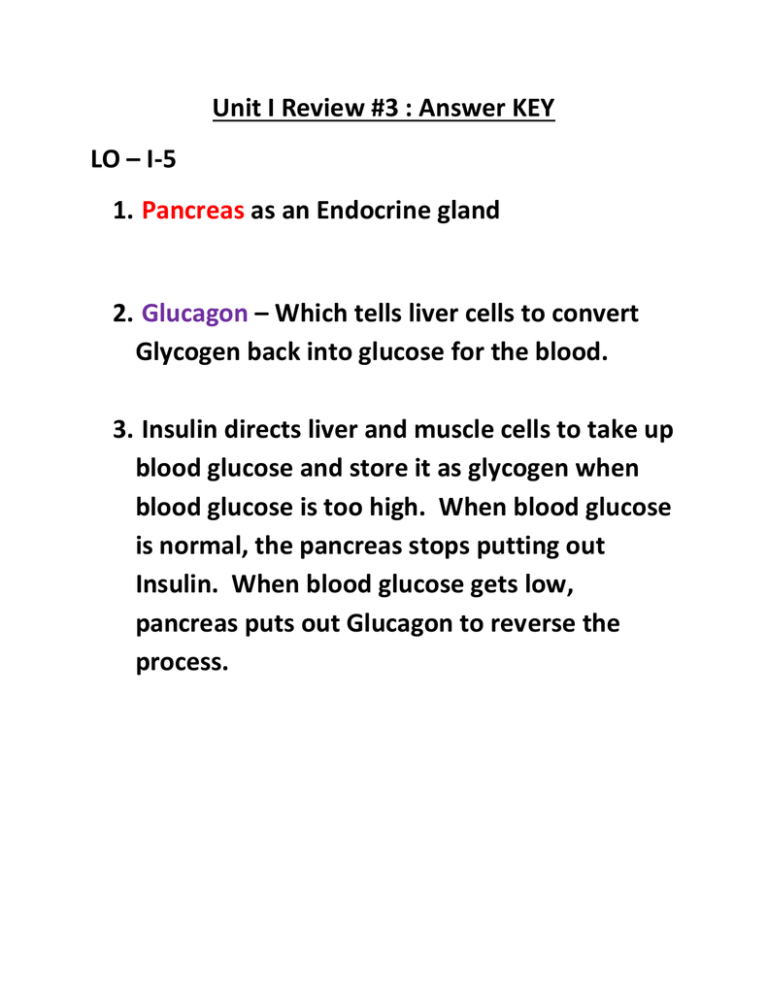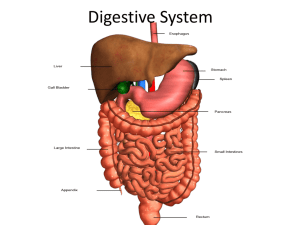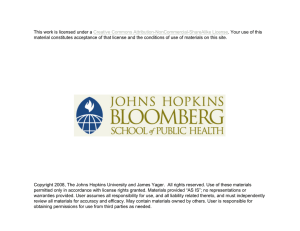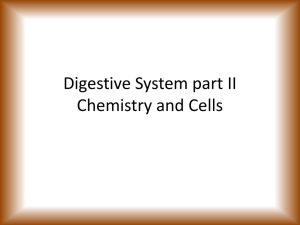Unit I Review #3 Answer KEY
advertisement

Unit I Review #3 : Answer KEY LO – I-5 1. Pancreas as an Endocrine gland 2. Glucagon – Which tells liver cells to convert Glycogen back into glucose for the blood. 3. Insulin directs liver and muscle cells to take up blood glucose and store it as glycogen when blood glucose is too high. When blood glucose is normal, the pancreas stops putting out Insulin. When blood glucose gets low, pancreas puts out Glucagon to reverse the process. 4. Excess glucose converts to Glycogen and is stored in muscle and liver cells. 5. GLUCAGON will raise blood sugar. 6. Glucagon causes cells to break down Glycogen into glucose. LO – I-6 1. Bile breaks up fat clumps into smaller fat droplets, this is known as emulsification. 2. Bile is produced in the liver. 3. Bile is stored in the Gallbladder. 4. Bile performs this emulsification of fats in the small intestine, as it is secreted into the Duodenum. LO I-7 Key Functions covered in earlier review: - Detox, Production of Plasma Proteins, Manufacturing and excretion of Cholesterol, Production of Bile, Receive and process sugars and amino acids, Deamination (Converting ammonia into urea), Blood glucose homeostasis. Red blood cell recycling. 1. Blood Glucose Concentration 2. Urea. Amino groups are taken off of amino acids and ammonia is produced, then 2 ammonia molecules are combined with one carbon dioxide molecule to form UREA. 3. The liver breaks down toxic substances in the blood into less harmful substances. 4. Hemoglobin is converted into BILIRUBIN, this waste product is then excreted into the intestine as part of the bile. 5. Jaundice is the accumulation of Bilirubin in the blood as it is unable to be excreted with the bile. Some causes could be: blocked bile ducts, blood infections that cause Hemolysis (rapid rupturing of red blood cells), or overall liver failure (Hepatitis). Symptoms include yellowing of the skin and scleras (whites) of the eyes. LO I- 9 1. The small intestine uses Plicae, Villi and Microvilli to increase surface area for adequate absorption. 2. A high surface area is required to absorb adequate amounts of nutrients to sustain life. 3. A LACTEAL. 4. The capillary bed in each villus is required for absorption of amino acids and monosaccharides. The other function of this capillary bed is to drop off oxygen and processed nutrients to these hard working cells of the villus. 5. Lacteals absorb the products of fat digestion. 6. Active Transport would be required to move substances from the lumen of the small intestine into the blood, as we want to absorb all of the nutrients. 7. After fat digestion products are taken into a Lacteal they are gathered into major lymphatic vessels which then carry this lymph and deliver it into major blood vessels near the chest. 8. Sugars go straight to the liver for processing. LO – I-10 1. E-coli are a fairly common strain of bacteria found in the large intestine. 2. Large intestine. 3. The bacteria in the large bowel are important for : A) Production of some vitamins (Vit K) B) Breaking down indigestible wastes to free up other vitamins and minerals. C) These bacteria colonize the gut and prevent the overgrowth of harmful bacteria. 4. FLATULENCE – Gas – Fluffs – Farts Etc.







